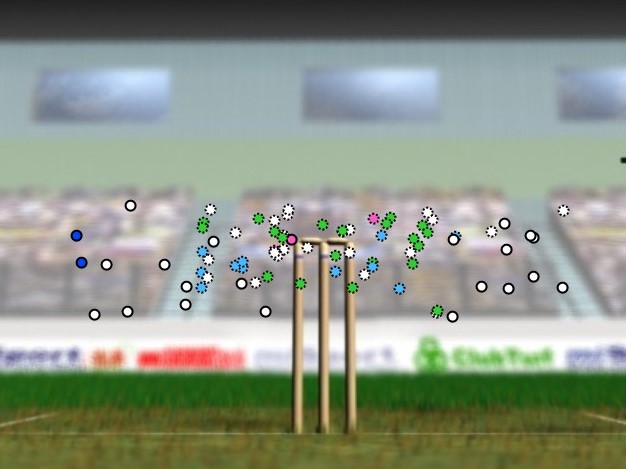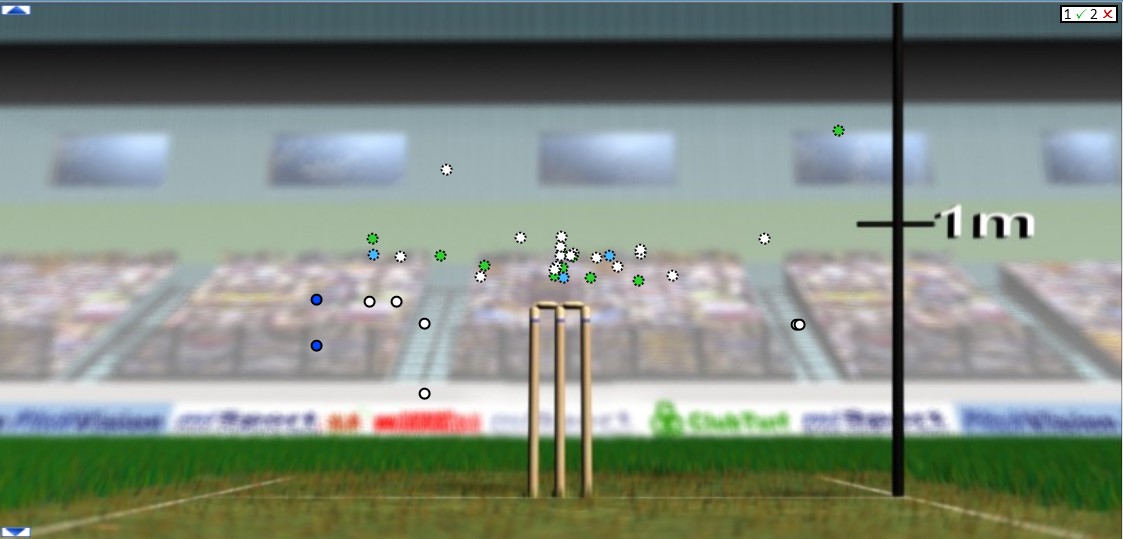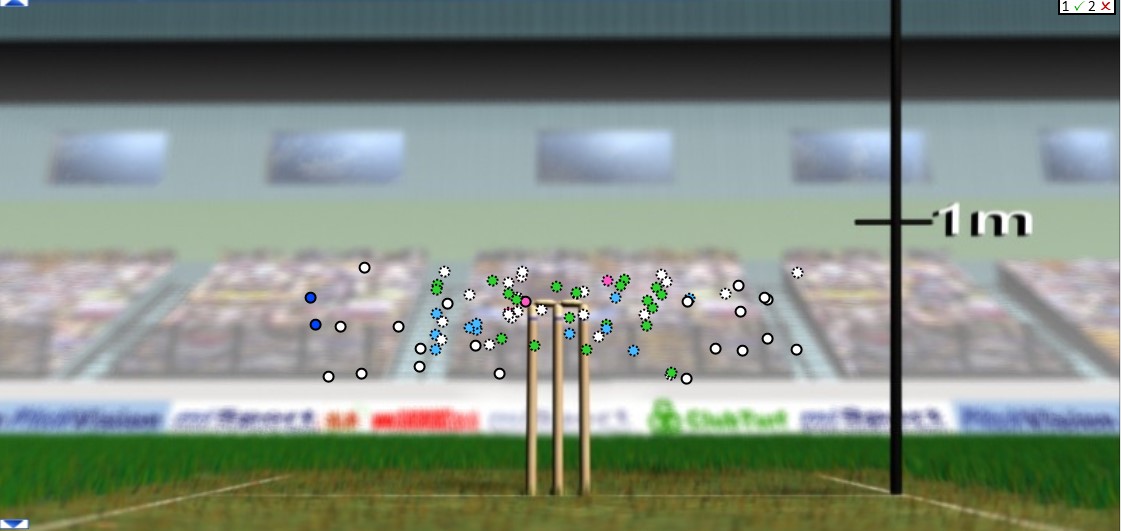What Length Should You Bowl on an Uneven Pitch?
 When you get a minefield pitch, everyone looks to the bowlers to win the game easily. Do you feel the pressure?
When you get a minefield pitch, everyone looks to the bowlers to win the game easily. Do you feel the pressure?
It's not as easy as you first think.
While conditions are in your favour, you can slip up. If the game is likely to be low scoring, a bad spell can finish the game for you.
So, analyst Waqas Zafar has done some research to help you stay focused.
Analysis on a tough pitch
Using PitchVision, a total of 434 balls have been bowled to ne batsman. The bounce was unpredictable, but the pitch was not unplayable, as we will see.
200 balls were dug in short, a huge 46% of the balls the batter has faced. Here is a close look at beehive of the shorter balls.
.jpg)
We can see a lot of green balls, which illustrates singles being taken. Balls on top of off stump have been dot balls but anything straight and even just outside off stump have been picked for runs.
The balls that have been picked away for boundaries have been beyond the 8.0 metre mark, which means that the batter has a good judgement of length and has not gone for horizontal bat shots until the bowler dug it very short. This takes away the factor of chopping the ball back onto your stumps.
The data shows bounce at this length has been predictable, hence not causing much worries for the batsman. The batter has looked to score runs which is a very good sign. Average pace has been 103.67 kmh (64.42 mph).
The bowler was wasting these deliveries, especially when you see what happened when the ball was fuller.
The length for wickets
113 times (26%) the bowler has hit a good length length. There has been a lot of unpredictable bounce from this length so I decided to break down it into two ranges.
First, the 6.0 – 6.5 range.
.jpg)
Here is a look at the beehive of the balls in 6.0 – 6.5 range:
.jpg)
With this happening, the batter left the balls outside off, but luckily for the batsman, no ball bounced below stump height. However, the batter has been provided with an easy let off with a lot of balls wide outside off stump or the ones sliding down the leg side.
Now, the 6.5 – 7.0 range. A look at the beehive of all these balls:
.jpg)
.jpg)
A number of balls from this 6.5 – 7.0 range have kept very low. A couple of balls outside off are almost equivalent to stump height or lower.
This is where the bowler has missed out.
Because whenever the ball is keeping low, bowlers should change their line of attack and look to hit the stumps.
We can see one wicket ball, skidded through very low but the number of dismissals could be increased. The wicket ball landed on 6.8 m from the stumps but bounced only 0.40m. A lot of balls from this 6.8 m zone bounced higher than 1m. This plays on the batter’s decision making.
Not all tracks are all uneven
When the bowler went fuller, the bounce was consistent, making run scoring easier. We can see the batter has put pressure on the bowler whenever the ball was either straight or width was on offer. The batter has taken advantage of not very accurate bowling as we can see the scattered beehive.

121 times (28%) the bowler has bowled the fuller length and this is where the batter has been most aggressive. A look at the beehive of the fuller balls:

So, as we can see, the key to bowling on a "bad" wicket is to work out exactly where it is bad and try to hit that as much as you can.
Get it wrong and the captain will think you are giving away easy runs. Get it right and you'll be the hero.
- Login to post comments

